Are you currently running pay-per-click advertising or contemplating it as a future marketing strategy?
In this video, CEO Ryan Miller walks through the most common missteps clinic owners take when running PPC advertising for elective healthcare procedures, and how they can lead to the overall failure of campaigns. Fortunately, all 5 mistakes discussed have one solution, enabling you to make the most of your PPC efforts. Follow along to learn how to de-risk paid search advertising and achieve your marketing goals.
Video Transcription:
Hi again, it’s Ryan Miller with Etna Interactive and we’re here today to talk about pay-per-click advertising, and specifically the 5 biggest and most common failures that we see when medical practices start to use paid search advertising to promote their clinics
1. Dipping a Toe
Let’s dive right in and talk about the first of those 5 which is dipping a toe in the water. I think for a lot of clinic owners, they look at paid search advertising and they think, it’s probably safer if I come at it with a really small initial spend. The reality is that you need to spend at least $1,000 a month or more on pay-per-click advertising in our space before you can reasonably expect it to work. You’ll say well wait a minute, why that, why such a big number to start?
Let’s think about a couple of basic metrics. On average, in the elective medical space we see that clicks cost between $2-$20. You can certainly find them for less than that and more than that, but most of them fall in that range. When we look at how many clicks are required just to get a lead—now to be clear, this isn’t a new patient, this is just a lead—somebody who has expressed an interest in a service from your clinic. It can take between 100-300 clicks.
That range, that math is super easy to do. You might easily pay $6,000 for a single lead, again not a patient, and with that in mind, when you start out by spending just a couple of hundred dollars in PPC because you want to test the waters, it’s really likely that you might actually not spend enough to net and attract a single patient.
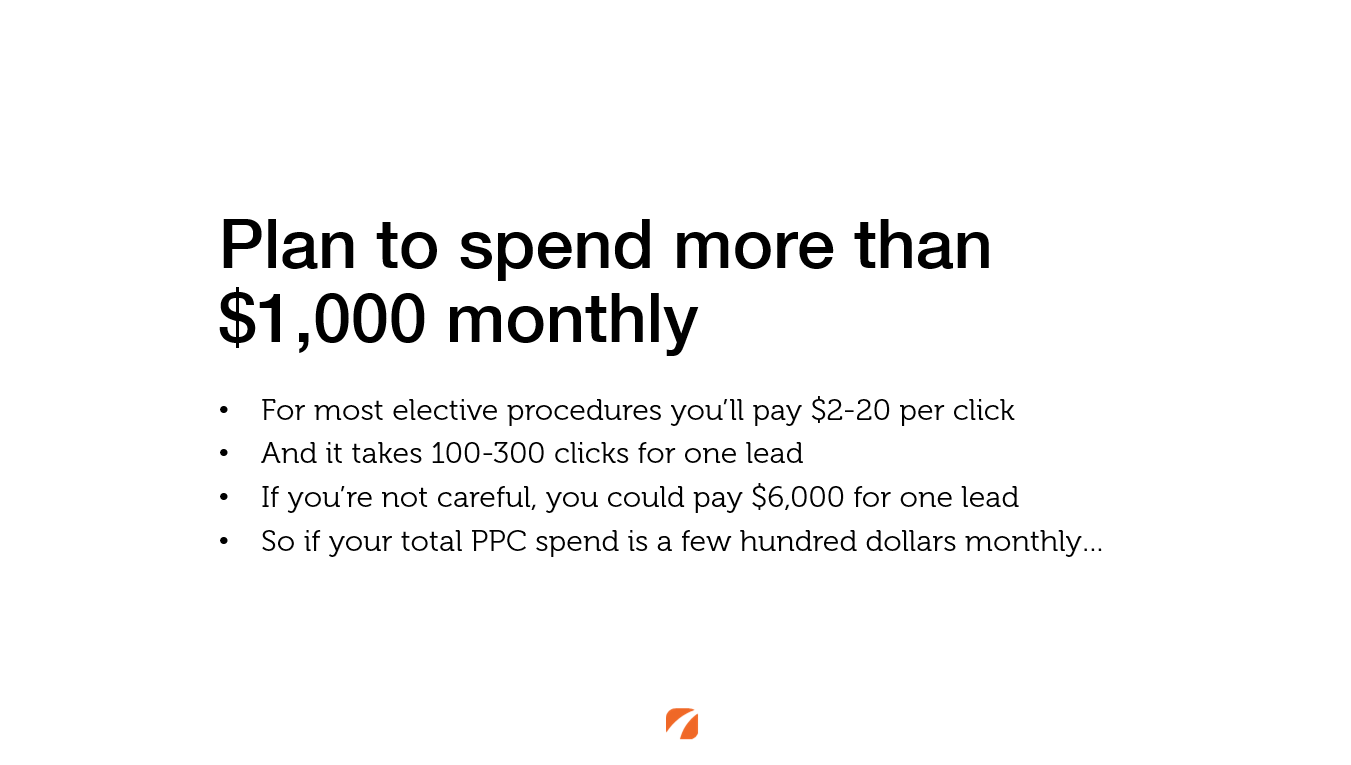
2. Ego Bidding
The second big thing that we see that goes wrong with PPC is what we call in the industry ego bidding. I couldn’t think of any better example of ego here than Johnny Depp in his role as Jack Sparrow. The position that we have to recognize, the top position, that number one spot, it feels super attractive and our instinct says, well if I’m in the top position I have to be profiting right? Well if we think about the math that we just talked about we see that that’s definitely not the case.
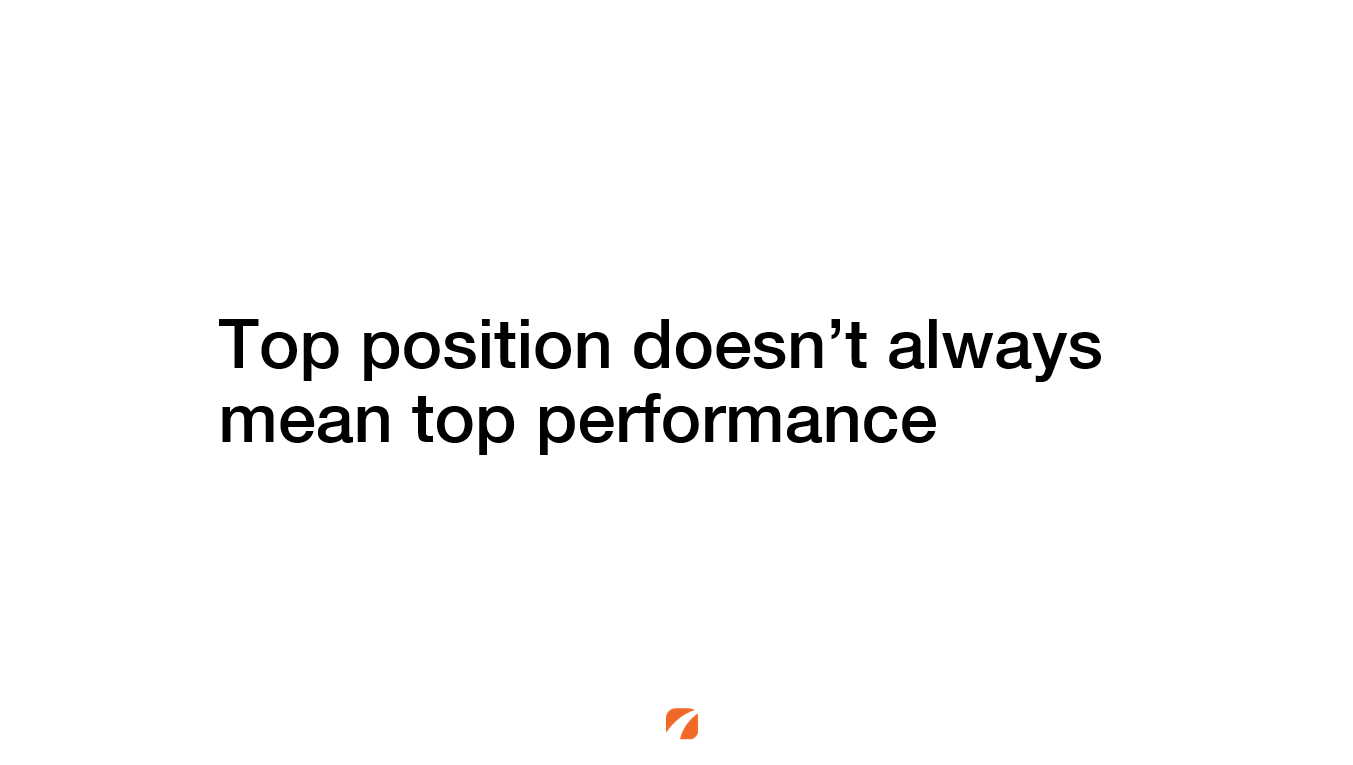
It’s easy to pay more for a new patient than you can actually earn from doing the case. With that in mind you have to recognize that the top position doesn’t always mean top performance, and very often we’ll actively bid to the second or third position, positions that are still very visible but much more affordable in order to meet our financial goals.
3. Following Like a Lemming
The third thing we see that happens here that’s a big fail with PPC is following like a lemming. Now fun fact here, in 1958 Disney filmed a movie called White Wilderness, a movie that popularized the idea that lemmings, these rodents in the far North commit suicide, they follow each other to their doom. What actually happened was that Disney’s TV producers trying to get drama for their movie, they actually pushed these little rodents off a cliff and filmed them falling to their deaths.
Whether you’re following a competitor blindly, without really understanding whether their PPC campaigns are working, or you’re being pushed by somebody outside of your organization to do something that’s not for your own good, I think either example works here, because what we don’t know from the outside looking in at other people’s PPC campaigns is whether or not their mechanics, their PPC advertising is actually working to profit for their clinic. My slightly sarcastic joke here is if your friends bid themselves into a loss, would you?
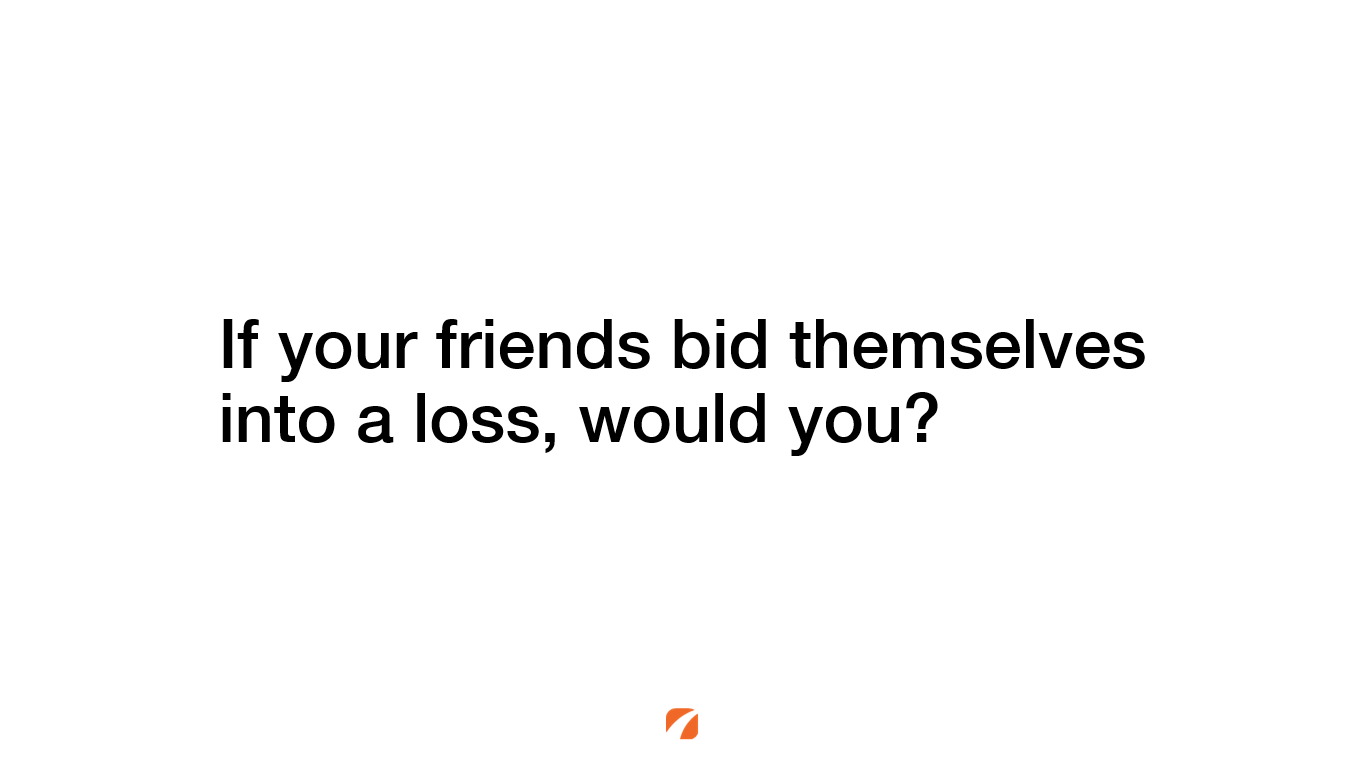
The reality is that we need to be careful to make sure that the selection of procedures, the geographic targeting, and the spend levels make sense, and even things that work well for your friends, or that appear to work well for competitors, that we need to interrogate them carefully to decide if they’re actually right for your practice.
4. Paying the Price for Low Quality
The fourth big thing that we see go wrong with pay-per-click advertising is really paying a price for low quality which specifically is about not understanding Google’s quality score system. They consider a bunch of stuff. They look at your selection and grouping of keywords, the relevance of those keywords to the content of your landing page, and the content that you write up for the ads that appear in Google search results. They look at the historic performance of your campaign and a variety of other factors, and in looking at all of those things they assign back to you a quality score, and you say well why does that matter, Ryan? Well the reason why it matters is this: the ad rank formula.
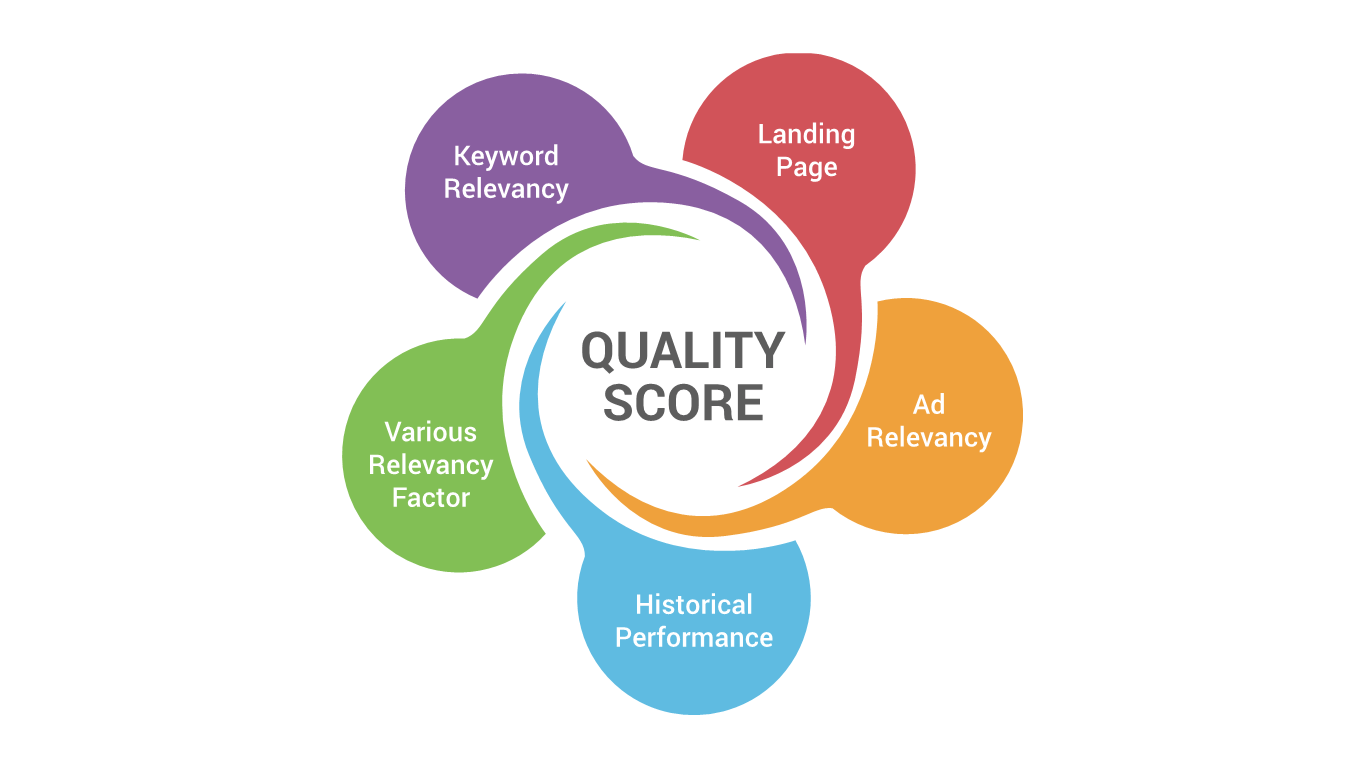
The ad rank formula multiplies what you’re willing to bid for any given keyword search by your quality score. Obviously, the higher your quality score, the less that you have to pay to earn a top position in those search results. By omitting and not being aware of quality score as a factor, we see very often that pay-per-click advertisers pay much more than they have to because they’re letting their spend rather than their quality be the main driver for their ad rank.
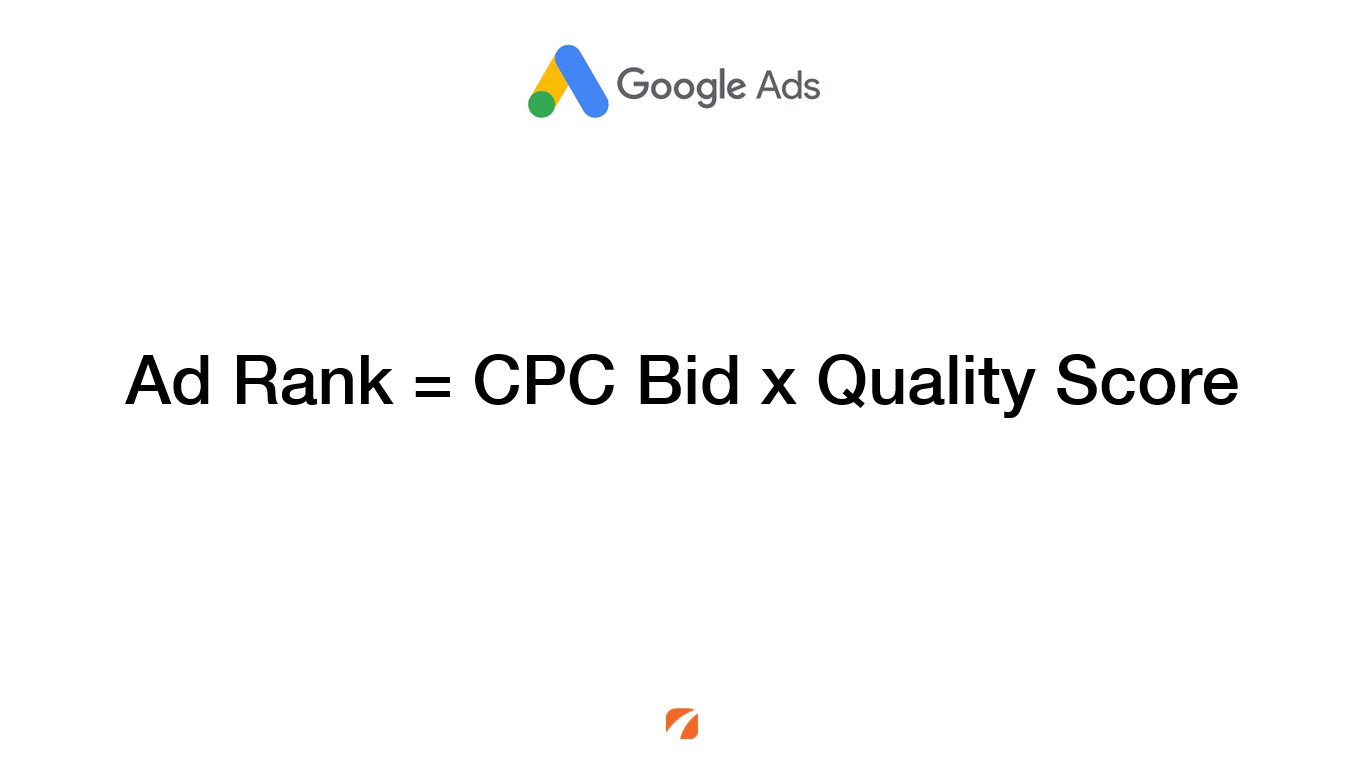
5. Operating Off the Rails
The fifth and final thing that we see here is just really operating off the rails right, it’s like a wreck waiting to happen because we don’t have the governing factors that signal us when we might have a problem or risk in our campaign. So we need to install guides to help keep our pay-per-click advertising on track.
These are things like inside of a campaign we can install what are called negative keywords to drain off the impressions that you’re paying for that aren’t resulting and attracting new patients, and from the outside we can have key performance indicators like target cost-per-click or target cost-per-lead, as well as monitoring of conversions inside of our office to make sure that the factor’s that are driving the economics of our pay-per-click advertising, that those are staying on track so we don’t run into a territory where we’re actually losing money while we’re using pay-per-click advertising.

The cool thing is, all 5 problems, they have one solution. Sticking with my bad theme here of old movie posters, I was actually kind of surprised to see, I was tempted at first to focus on the one ring that ruled them all, one solution that can solve all 5 problems. But I think what was really interesting was that there was actually an alternate movie poster that was in circulation at the same time which read, power can be held in the smallest of things. What we’ve found with pay-per-click advertising is that modelling, which is a fairly small activity, predictive modelling can help us avoid all of these problems.
Specifically, it helps us right size our spend and figure out, how much do we need to spend to achieve profitability inside of our market and to achieve our specific financial goals. We can define, through this process, specific bid limits and optimal positions, whether its 1, 2, or 3 that’s going to drive the performance we want out of our campaign.
We can test different types of competitive bid strategies and make sure that we’re going to be profitable rather than just blindly following the competition, and then really shine the light on where we need to engage in what’s called CRO, or conversion rate optimization in order to achieve our goal.
Finally, we can get really clear signals back if we’ve done the modelling in advance about when risk is popping up inside of our pay-per-click advertising campaigns so we can push that back down. I guess probably the bad analogy there to stick with is we can toss risk into the fires of Mordor and completely quash it so we don’t lose money when we’re engaged in PPC.
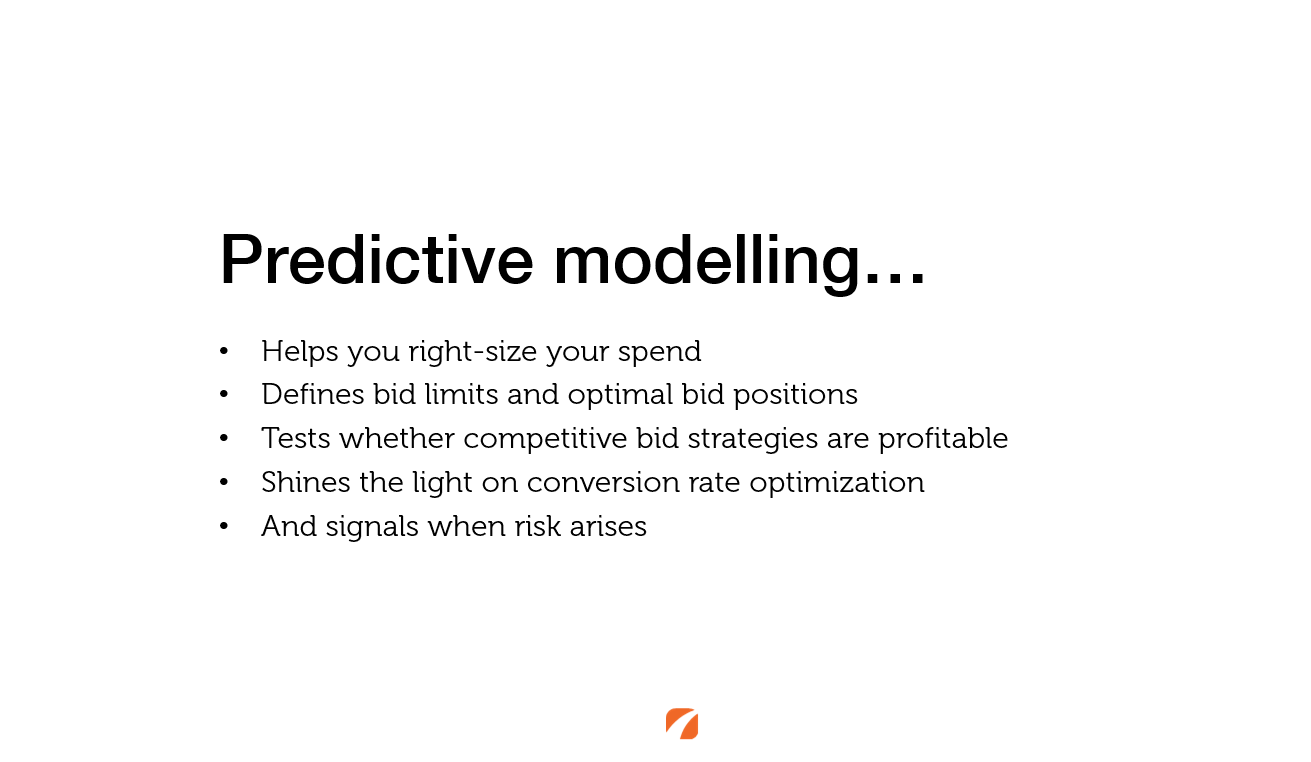
Now this particular process is something that we’ve developed internally and something we’ve been recognized for nationally, incredibly proud of our team there. Not only are we a Google Premiere Partner, we’re in the top 3% of all the agencies who are managing paid advertising, but recognized at the end of 2018 as being one of the top agencies in all of the Americas for helping businesses grow online.
The bottom line here is that modelling, the predictive modelling is something you can do for yourself, you can turn to an expert for help, but you can completely de-risk paid search advertising as long as you’re employing the right tools.
As always, if you have any questions I invite you to contact us using the button below and hopefully as well, you’ll follow us both on social media and by subscribing to our newsletter.
Contact Us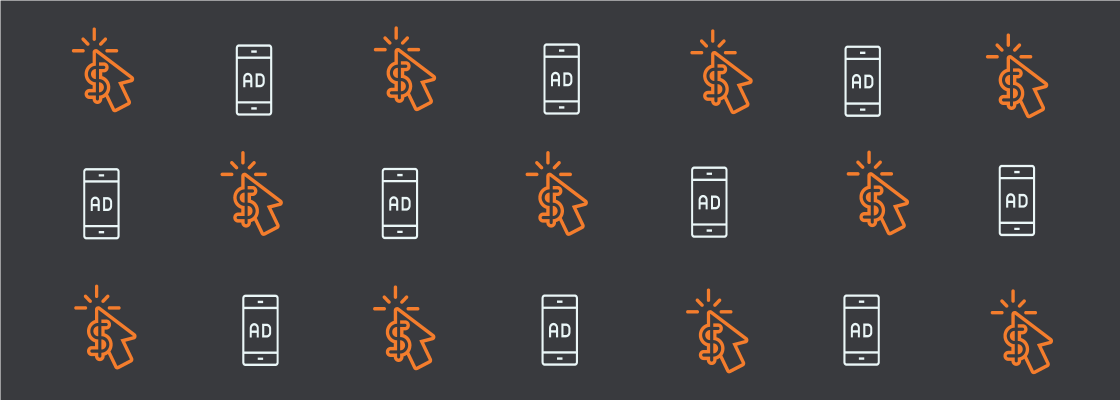

Leave a Comment